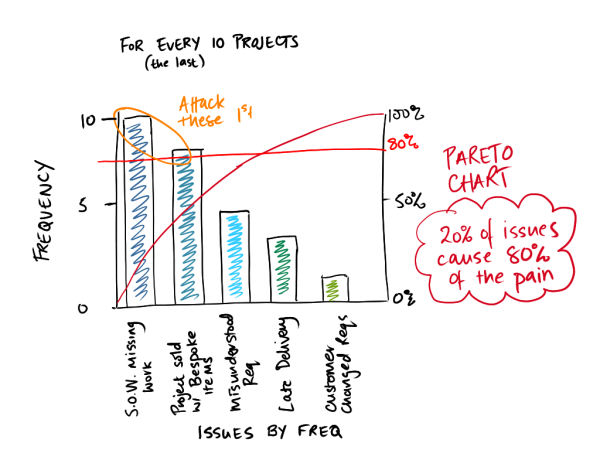…and useful bits and pieces
I have some deep held beliefs gained through 20+ years of development and leadership across a range of high tech industries from silicon chip wireless technology to electrical control of large industry machines to continuous improvement of IT services. Some of these, in no particular order are below.
Continuous Improvement
To continuously improve anything, a governing framework should be about having:
- Consistency of approach
- Visibility of initiatives across the business
- Prioritisation of work
- Qualification that issues are real
- Measurement of current state and future states as proof
The true order of things is
People -> Process -> Technology
Successful Projects
I often quote that in order to be successful at work is that you need:
- The right people
- at the right time
- with the right information
- and the right tools
Applying Lean to a business
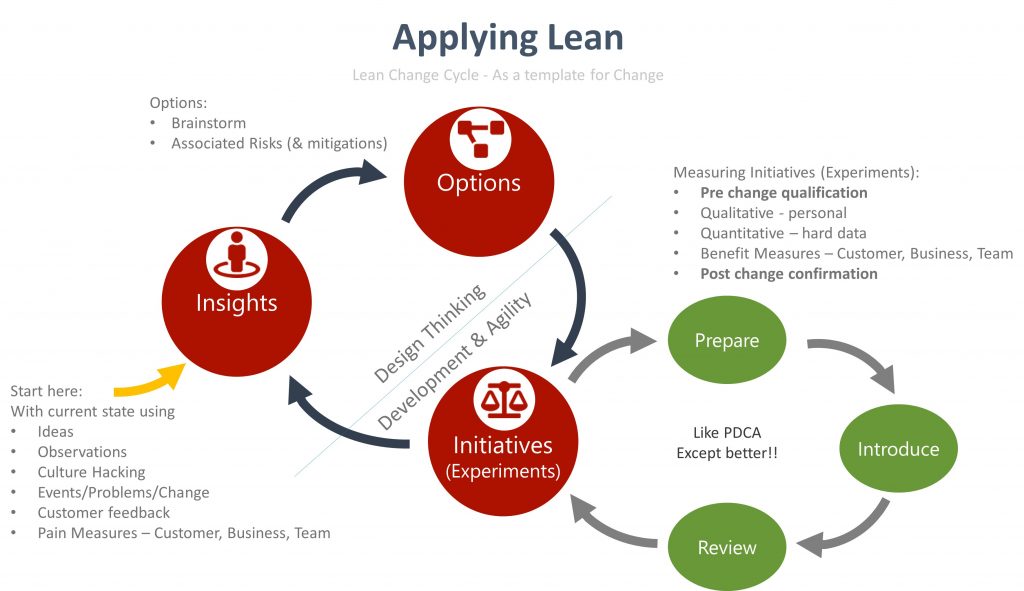
Applying Lean to a business isn’t just simply starting to use Kanban boards, scrum ceremonies, or doing Kaizen and value chain analysis… its about the people, customer, and service (in that order!)…
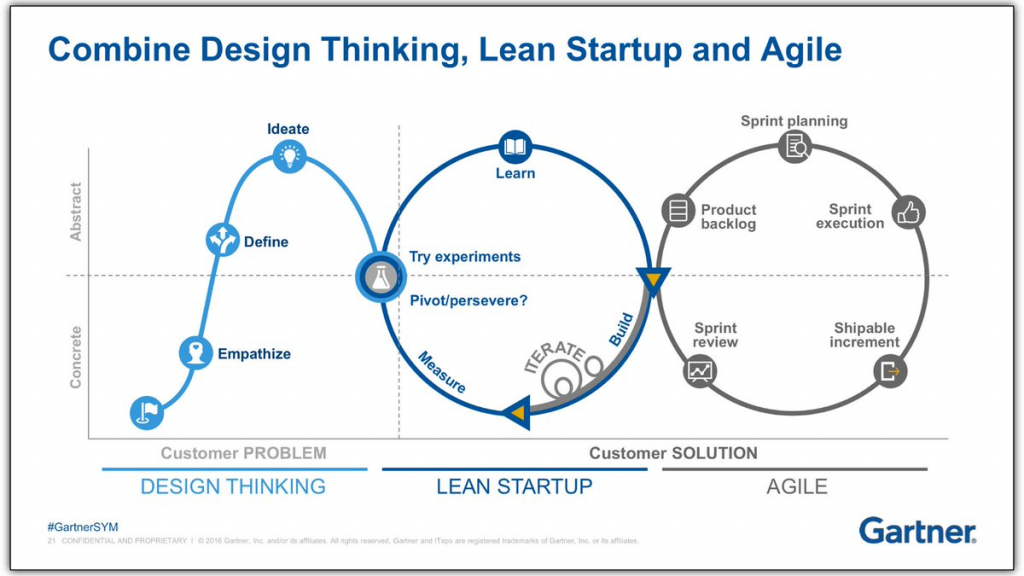
Understanding the need to combine Design Thinking, Lean Start-up and Agile to form the most powerful way to understand and deliver value to a customer
High performing teams
High performing teams need Psychological Safety – Dependability – Structure and Clarity – Meaning – Impact. This is a good summary of the results of Google’s Project Aristotle.
Much of the work done at Google, and in many organizations, is done collaboratively by teams. The team is the molecular unit where real production happens, where innovative ideas are conceived and tested, and where employees experience most of their work. But it’s also where interpersonal issues, ill-suited skill sets, and unclear group goals can hinder productivity and cause friction.
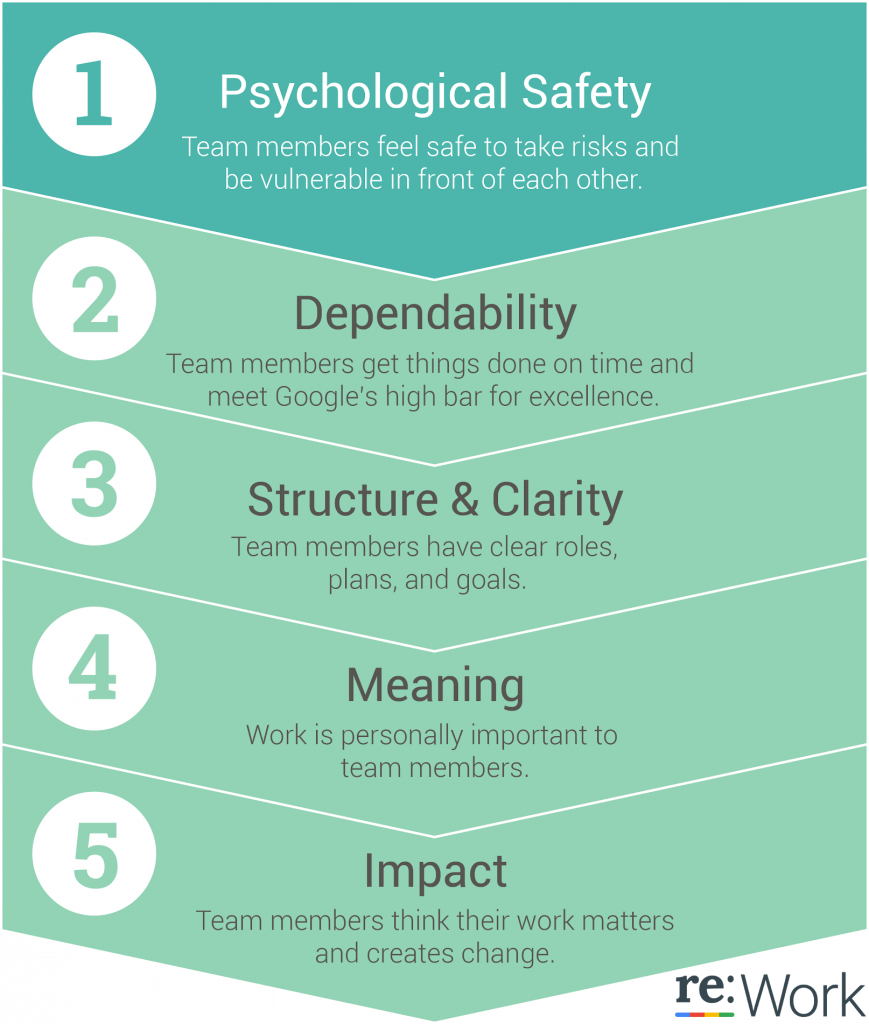
/https://rework.withgoogle.com/print/guides/5721312655835136/
Lean Coffee
Lean coffee is a useful tool (meeting) to get insights, ideas and creative thought going among people, particularly those who are engaged with looking for change and improvement.

Implementing Change – Stepped Approach
The image below (slide) is the summary slide I presented to demonstrated how I approach change management – in this case it was a hypothetical “war on rework”.

The steps and overall approach can be applied to any change type, complexity and size.
The methodology is adopted from Kotter’s 8-Step Change Model, which are numbered (although not necessarily linearly):
- Create urgency
- Form a powerful coalition
- Create a vision for change
- Communicate the change
- Remove obstacles
- Create short term wins
- Build on the change
- Anchor the change in corporate culture
Applying this methodology from a Problem Identification standpoint
Investigate (Insights)
- Use practices to gain Team and Organisational Insights
- Some Insights point to simple options
- Some Insights require a deeper look
Create Backlog (Options)
- The Team can now create Options which are designed to address insights
- Backlog management removes low priority, high cost with low return, and focusses on correct options
- Backlog management identifies missing measurements/metrics and KPIs
- Backlog management measures Pain (for customer, business and team)
- CSI takes the role of Product Owner and ensure wise options made
Experiment with Change (Initiatives)
- CSI assists Team to create hypothesis for Experiments (Initiatives)
- Team implements Experiments (Initiatives) – Pivot | Pursue | Abandon
- CSI assits with collecting and monitoring results and learnings
Strategic Change Canvas
The image below shows a useful tool for creating the vision of the change/improvement and getting a team together to get a single view of how a change/improvement is analysed, qualified and implemented

The quality of the meeting will determine the effectiveness of the canvas produced
Lean Canvas for Meetings (remote)
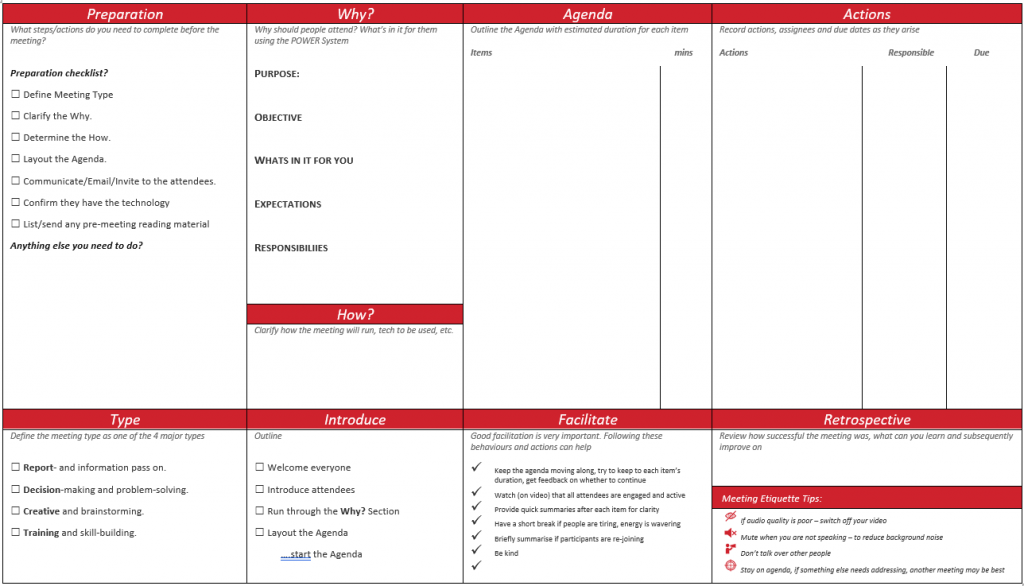
4 Problem Types
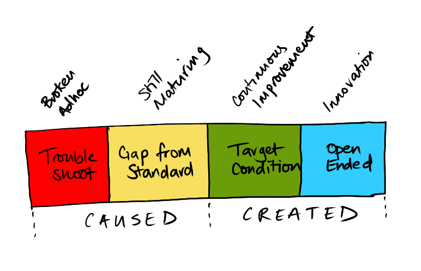
Pareto Effect
